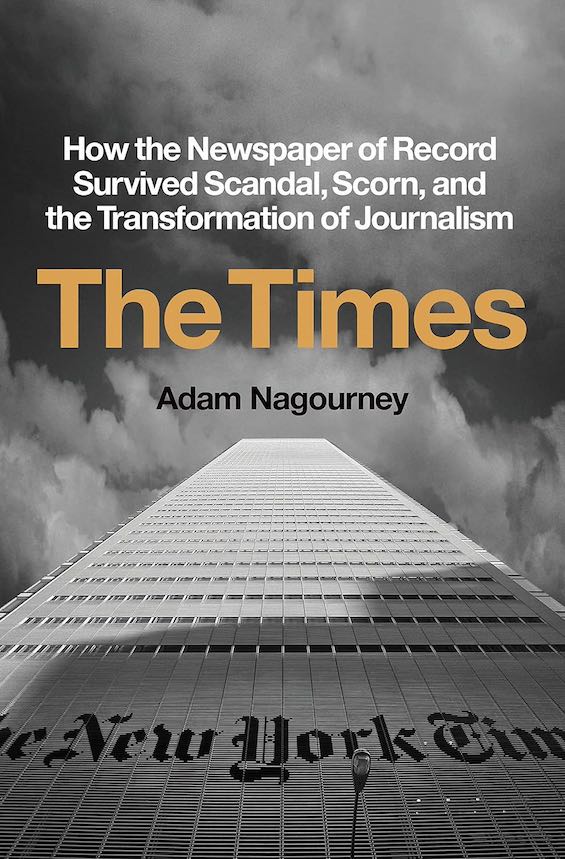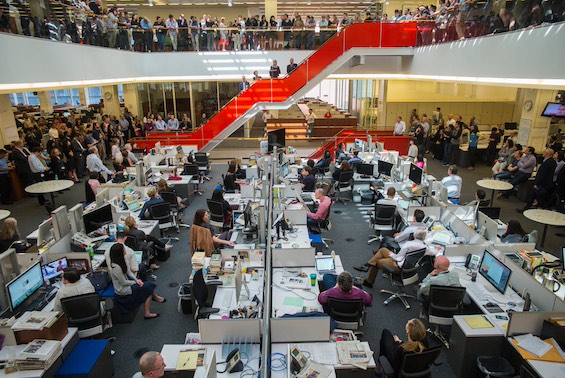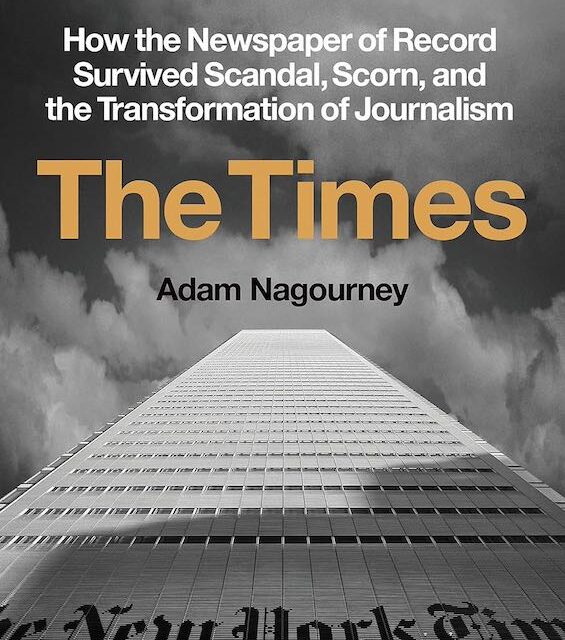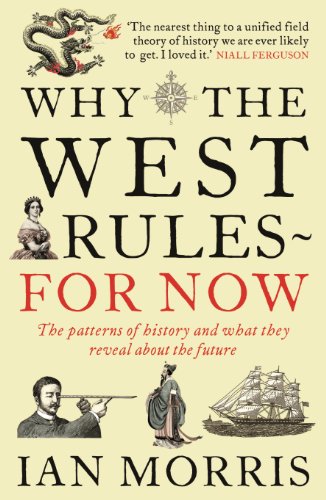
The editors of the New York Times are apt to regard it as the most influential newspaper in the world, and they’re probably right. Despite all the tumult in the business of disseminating the news since the advent of the World Wide Web, the Times now boasts 9.7 million subscribers. They support 1,700 journalists reporting from more than 160 countries. And, more to the point, it’s the rare leader in government, business, finance, or the arts who doesn’t read the paper every day. Their attention has shifted from the printed page to mobile and laptop screens. But that shift, which has doomed many of the country’s other leading newspapers, has moved the Times solidly back into the black after many rocky years. And reporter Adam Nagourney details how the leadership of the paper managed to pull this off in The Times, his eye-opening look inside the New York Times.
Estimated reading time: 6 minutes
A focus on the leaders of this family-owned paper
The Times is, in fact, a study of the paper’s leadership—its publisher and top editors. As Nagourney notes at the outset, his history “begins with the appointment of A. M. Rosenthal as executive editor in 1976 and ends with the election of Donald Trump as president in 2016.” The earthshaking events that transpired during this forty-year period surface from time to time but, with a handful of exceptions, largely as background. Nagourney’s focus is squarely on the three publishers and seven executive editors who ran the paper during that period.
The Times is family-owned, and has been since 1896. Eighty years later, when Nagourney’s account begins, publisher Arthur Ochs “Punch” Sulzberger (1926-2012) was the grandson of Adolph S. Ochs, who’d bought the money-losing paper before the turn of the century. Punch handed off the reins to his son, Arthur Ochs “Pinch” Sulzberger Jr. (born 1951) in 1992. And twenty-four years later Pinch in turn passed the paper’s leadership along to his son, Arthur Gregg “A.G.” Sulzberger (born 1980). Nagourney portrays these men in detail, keeping a respectful distance but pointing to their weaknesses as well as their strengths.
The Times: How the Newspaper of Record Survived Scandal, Scorn, and the Transformation of Journalism by Adam Nagourney (2023) 592 pages ★★★★★

A focus on the paper’s executive editors
In book publishing, editors keep a low profile. They often don’t surface outside their industry until their obituaries appear or in the acknowledgments of the authors they publish. But the same isn’t true of major newspapers. At the Times, habitual readers are likely to be well aware who’s at the top of the editorial hierarchy at any given time. So, for those of us who’ve read the daily paper for decades, the names A. M. “Abe” Rosenthal, Max Frankel, Joe Lelyveld, Howell Raines, Jill Abramson, Bill Keller, and Dean Baquet are all likely to be familiar. (All were former Times reporters whose bylines frequently appeared on the paper’s front page.)
With each of these executive editors in turn, Nagourney digs deeply into their relationships with the publishers who were their bosses and the men and women of the newsroom. In the closing years covered in the book, corporate executives on the business side of the New York Times Company enter into the picture, too. Then, the shift to digital operations forced the editors to relinquish their treasured isolation from the dictates of commerce and begin to think about how to expand the ranks of Times subscribers.
The news that shaped the Times
Naturally, Nagourney’s story would be incomplete without some recognition of the news that filled the paper’s pages. Major events—most prominently Watergate, the civil rights and feminist movements, the rise of the internet, the Monica Lewinsky scandal, and the invasion of Iraq—play roles both large and small. But in every case, the author sticks to his guns, drawing our attention to the publishers’ and editors’ response to these events. For example, when the Times had to take a back seat to the Washington Post in its reporting on Watergate, then-executive editor Max Frankel frantically, and in vain, threw additional resources into the story. And the failure of the Times to reach its diversity goals by hiring enough women and African Americans to fill senior editorial positions bedeviled everyone in the paper’s leadership for decades (and still does).
Two scandals inside the paper also loom large in Nagourney’s account. As any longtime reader of the Times will recall, reporter Judith Miller’s stories confidently promising “weapons of mass destruction” that never turned up in Iraq nearly destroyed the Times‘s reputation when the truth became known. And the Jayson Blair plagiarism scandal only made things worse for a time. A lot worse. So, Nagourney’s subtitled reference to “surviving scandal and scorn” is right on target.
The second big history of the New York Times
Half a century ago another New York Times reporter wrote another bestselling account peering inside the New York Times. Gay Talese’s book, The Kingdom and the Power: Behind the Scenes at The New York Times: The Institution That Influences the World, appeared in 1969. At the time, observers credited it with starting a trend toward books that portray the inner workings of the journalism establishment. Nagourney’s The Times continues in that tradition. It’s a worthy successor to Talese’s book.
About the author

Adam Nagourney is a national political reporter for the New York Times based in Los Angeles. He was born in 1954 in New York City and earned a degree in economics from the State University of New York at Purchase. He worked as a journalist for other New York area papers and for USA Today before joining the Times in 1996. There, he has taken on a succession of posts ever since, moving into and out of covering politics. His brother, Eric, is an editor for the Times. The Times is his second book.
For related reading
More than half a century ago, I joined hundreds of thousands of other habitual readers of the New York Times to read The Kingdom and the Power: Behind the Scenes at The New York Times: The Institution That Influences the World by Gay Talese. Talese had worked at the paper for twelve years. His account was the first prominent example of a flood of books about the media in the United States. Nagourney mentions it frequently in the pages of his new book.
You might also turn to:
And you can always find my most popular reviews, and the most recent ones, on the Home Page.



























